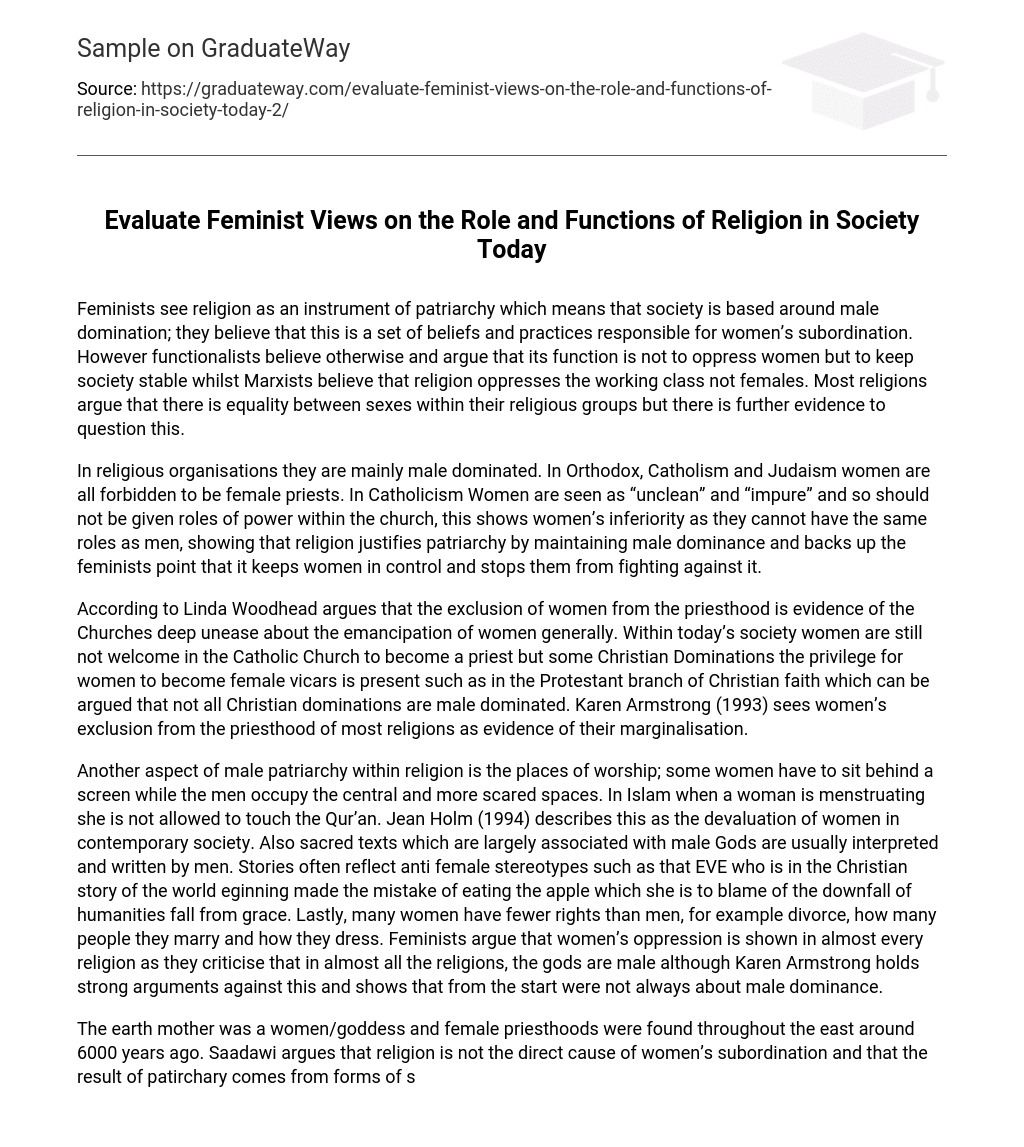Feminists perceive religion as a tool of patriarchy, signifying a society that revolves around male dominance. They assert that it encompasses a collection of principles and customs that contribute to the subordination of women. On the contrary, functionalists hold a different viewpoint, arguing that religion’s purpose is not to oppress women but to maintain societal stability. Meanwhile, Marxists contend that religion oppresses the working class rather than females. Although many religions claim equality between genders within their religious communities, there exists additional evidence to challenge this notion.
Religious organizations, including Orthodox, Catholicism, and Judaism, have predominantly male hierarchies that prohibit women from becoming female priests. In the context of Catholicism, women are considered “unclean” and “impure,” effectively preventing them from attaining positions of authority within the church. This reinforces the idea of women’s inferiority by denying them equal opportunities to men and aligns with feminist ideology asserting that religion maintains male dominion while impeding women’s capacity to challenge this system.
According to Linda Woodhead, the Catholic Church’s exclusion of women from the priesthood reveals its discomfort with the broader empowerment of women. Although women are still prohibited from becoming priests in the Catholic Church presently, certain Christian denominations do permit women to serve as female vicars. This serves as proof that not all Christian denominations are controlled by males. Karen Armstrong (1993) regards the exclusion of women from the priesthood in most religions as an indication of their marginalization.
Another aspect of male patriarchy within religion is the treatment of women in places of worship. In some cases, women are required to sit behind a screen while the men occupy the central and more sacred spaces. For instance, in Islam, women who are menstruating are not allowed to touch the Qur’an. This practice, as described by Jean Holm in 1994, contributes to the devaluation of women in contemporary society.
In addition, sacred texts that are primarily associated with male Gods are often interpreted and written by men. These texts frequently perpetuate anti-female stereotypes. For example, in the Christian story of the world’s beginning, Eve is blamed for humanity’s fall from grace for making the mistake of eating the apple.
Furthermore, many women have fewer rights than men within religious contexts. They may have limited rights regarding divorce, the number of people they can marry, and even how they dress. Feminists argue that women’s oppression is evident in almost every religion due to these disparities. However, Karen Armstrong presents strong arguments against this belief and emphasizes that from their origins, religions were not always centered on male dominance.
The earth mother, a female deity, was worshipped by women and female priesthoods were present in the eastern societies around 6000 years ago. Saadawi argues that women’s subordination is not directly caused by religion, but rather by patriarchal structures that have developed over time. These structures include the reinterpretation of religious beliefs by men to favor patriarchy. Linda Woodhead acknowledges that traditional religions have patriarchal elements but emphasizes that not all aspects of religion adhere to this notion.
In her perspective, there are women who utilize religion to attain greater autonomy and admiration, a concept she terms as “religious forms of feminism”. One instance is observed among Muslim women who choose to don a veil. Although western feminists perceive it as an indication of subjugation, some Muslim women perceive the veil as a means to transcend societal constraints concerning their domestic lives, professional prospects, and education. They view it as an emblem of emancipation that enables them to participate in public endeavors while upholding their individuality.
In the perspective of Helen Watson, Islamic women’s veiling can offer advantages by allowing them to avoid being objectified and seen solely as sexual entities. This practice is also considered a response to the increasing impact of Western culture. Linda Woodhead’s research further emphasizes how religion permits women to attain respect and status within their roles in their households and families’ private sphere. For some women, membership in an evangelical group can be empowering.





